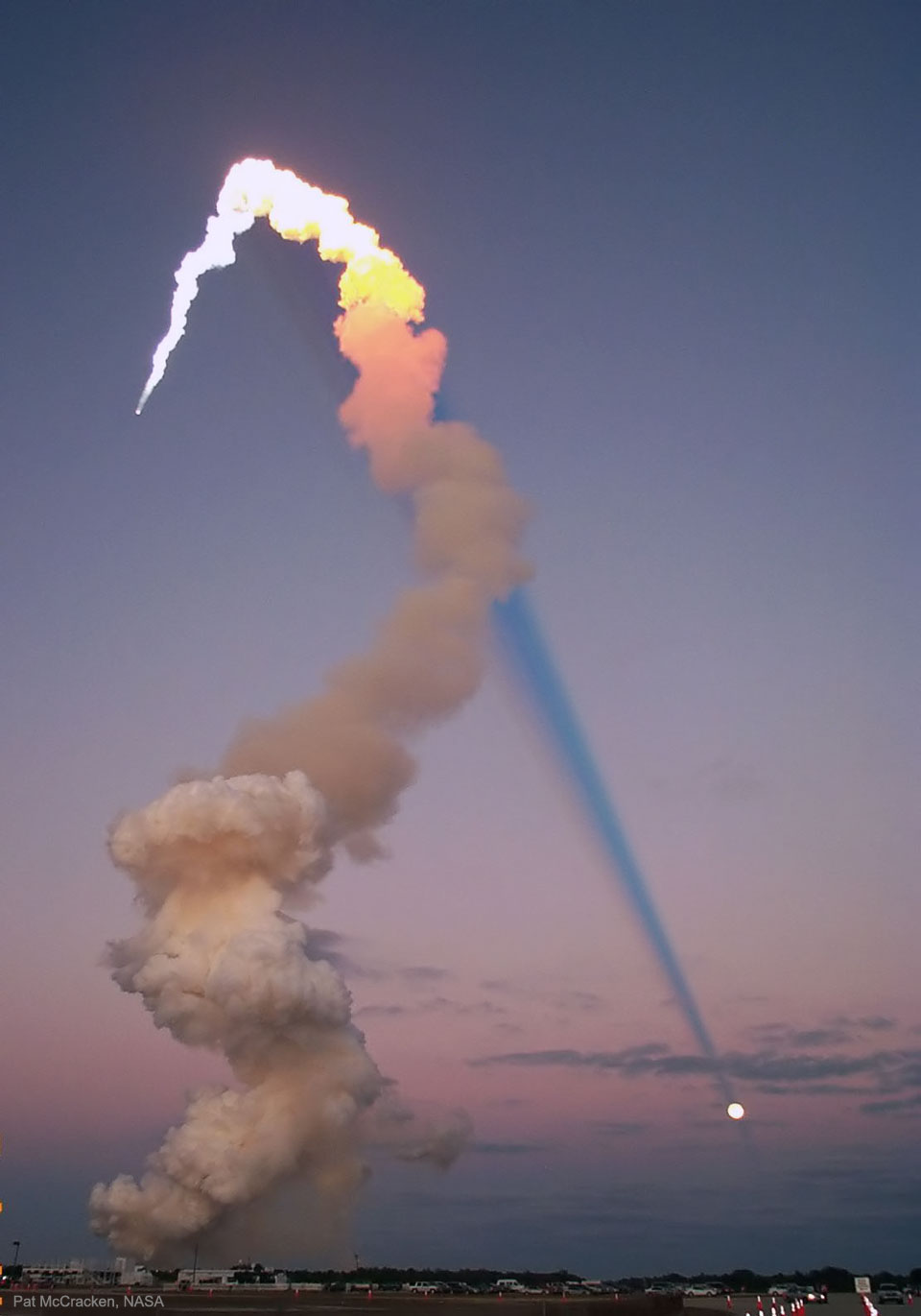안녕하세요!
디지탈노다지입니다.
미국 NASA에서 제공하는 오늘의 우주 사진을 공유합니다.
어떤 우주의 모습을 비춰줄까요?
우선, 사진부터 감상하시죠! 이 멋진 사진의 제목은 Rocket Plume Shadow Points to the Moon 입니다.
NASA에서 공식적으로 제공한 설명을 보시죠. Why would the shadow of a rocket's launch plume point toward the Moon? In early 2001 during a launch of the space shuttle Atlantis, the Sun, Earth, Moon, and rocket were all properly aligned for this photogenic coincidence. First, for the space shuttle's plume to cast a long shadow, the time of day must be either near sunrise or sunset. Only then will the shadow be its longest and extend all the way to the horizon. Finally, during a Full Moon, the Sun and Moon are on opposite sides of the sky. Just after sunset, for example, the Sun is slightly below the horizon, and, in the other direction, the Moon is slightly above the horizon. Therefore, as Atlantis blasted off, just after sunset, its shadow projected away from the Sun toward the opposite horizon, where the Full Moon happened to be. Almost Hyperspace: Random APOD Generator 로켓 발사 기둥의 그림자가 달을 향하는 이유는 무엇일까요? 2001년 초, 우주왕복선 아틀란티스호가 발사되는 동안, 태양, 지구, 달, 로켓은 모두 이 사진 같은 우연에 알맞게 정렬되어 있었다. 첫째, 우주왕복선의 플룸이 긴 그림자를 드리우려면, 하루의 시간이 일출 또는 일몰 근처에 있어야 한다. 그래야만 그림자가 가장 길고 수평선까지 뻗어 있을 것이다. 마지막으로 보름달 동안, 태양과 달은 하늘의 반대쪽에 있습니다. 예를 들어 일몰 직후에는 태양이 지평선보다 약간 아래에 있고, 반대 방향으로는 달이 지평선보다 약간 위에 있다. 그러므로 아틀란티스가 해가 진 직후에 발사되었을 때, 아틀란티스의 그림자는 태양으로부터 반대쪽 지평선을 향해 투영되었고, 그곳은 마침 보름달이 있는 곳이었다. 거의 초공간: 랜덤 APOD 발생기 우주의 다양한 모습은 아름답습니다~
그리고 광활하며 거대합니다. 형형색색 변화하며 살아있는 듯한 느낌을 주네요~ 가볼 수는 없지만 이렇게 사진으로 볼 수 있어서 좋네요!
디지탈노다지는 더 좋은 사진과 함께 돌아오겠습니다,
남은 하루도 행복하세요~ 
'자동화정보' 카테고리의 다른 글
| A January Wolf Moon(2024-02-13)NASA 우주사진 (1) | 2024.02.13 |
|---|---|
| HFG1 & Abell 6: Planetary Nebulae(2024-02-12)NASA 우주사진 (1) | 2024.02.12 |
| The Shadow of Ingenuity's Damaged Rotor Blade(2024-02-10)NASA 우주사진 (0) | 2024.02.10 |
| When Roses Aren't Red(2024-02-09)NASA 우주사진 (0) | 2024.02.09 |
| Globular Star Cluster 47 Tuc(2024-02-08)NASA 우주사진 (0) | 2024.02.08 |